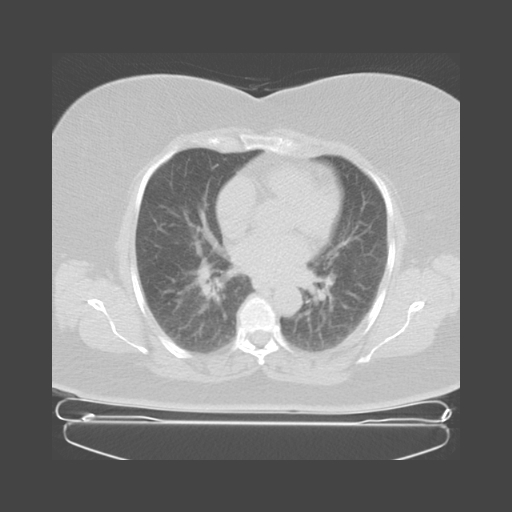
This is a sample image from the heart scan of a 54-year old, 212 lb, 5 ft 2 inch woman. The heart is the whitish-gray in the center; lungs are the dark (air-filled) areas on either side of the heart. Note the massive amount of surrounding gray tissues that encircles the heart and lungs. This is fat. At this weight, the diameter of total fat exceeds the combined diameter of the heart and lungs. If we were to show the abdomen, there would be even more fat. (The image shows the body not well centered because the technologist centers the heart, since this is, after all, a heart scan.)

This is a 55-year old, 151 lb, 5 ft 4 inch woman. Note the contrast in the quantity of fat tissue surrounding the chest, a much more normal appearance. Note that this woman is still around 25 lb over ideal weight, but not to the extreme degree of the woman above.
Another curious observation: Note the more whitish streaking in the heavier woman's lungs. Heart scans are performed while holding a deep inspiration (a deep breath inwards), mostly to eliminate lung respiratory motion during image acquisition. Nonetheless, the heavier woman's lungs are not as fully expanded as the more slender woman. In other words, the heavier woman cannot inflate her lungs as effectively as the thinner woman. Ever notice how breathless heavy people are? Some of this effect is just being out of shape. But there's also the added effect of the abdominal fat exerting upwards compression on the lung tissues, and the constrictive effect of the encircling fat mass. At the beginning of inspiration, the chest fat exerts the resistance of inertia to inspiration that is absent, or less, in a slender person. With each breath, the heavy woman must move 50 lbs or so of surrounding fat mass just to inhale.
The heavier woman is, in effect, suffocating herself in fat.
The distortions to the human body incurred by extreme weight gain are both fascinating and shocking. I hope you're breathing easily.